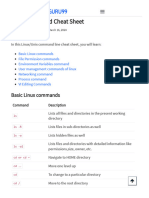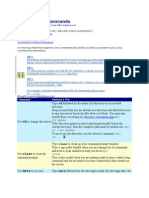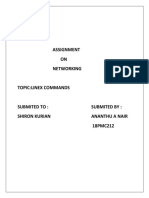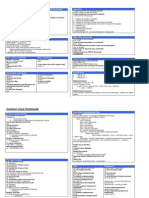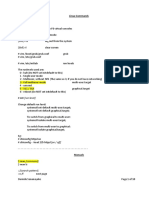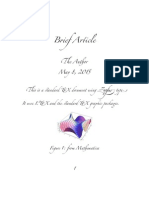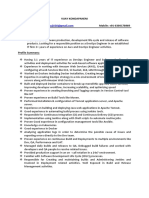0% found this document useful (0 votes)
81 views5 pagesLinux Command Cheat Sheet
The document lists basic Linux commands and their descriptions. It covers commands for file management, permissions, environment variables, users, networking, processes, and VI editing. The commands allow users to navigate directories, manage files and users, check system information, edit files, and connect to remote systems.
Uploaded by
Alain AranaCopyright
© © All Rights Reserved
We take content rights seriously. If you suspect this is your content, claim it here.
Available Formats
Download as PDF, TXT or read online on Scribd
0% found this document useful (0 votes)
81 views5 pagesLinux Command Cheat Sheet
The document lists basic Linux commands and their descriptions. It covers commands for file management, permissions, environment variables, users, networking, processes, and VI editing. The commands allow users to navigate directories, manage files and users, check system information, edit files, and connect to remote systems.
Uploaded by
Alain AranaCopyright
© © All Rights Reserved
We take content rights seriously. If you suspect this is your content, claim it here.
Available Formats
Download as PDF, TXT or read online on Scribd
/ 5







